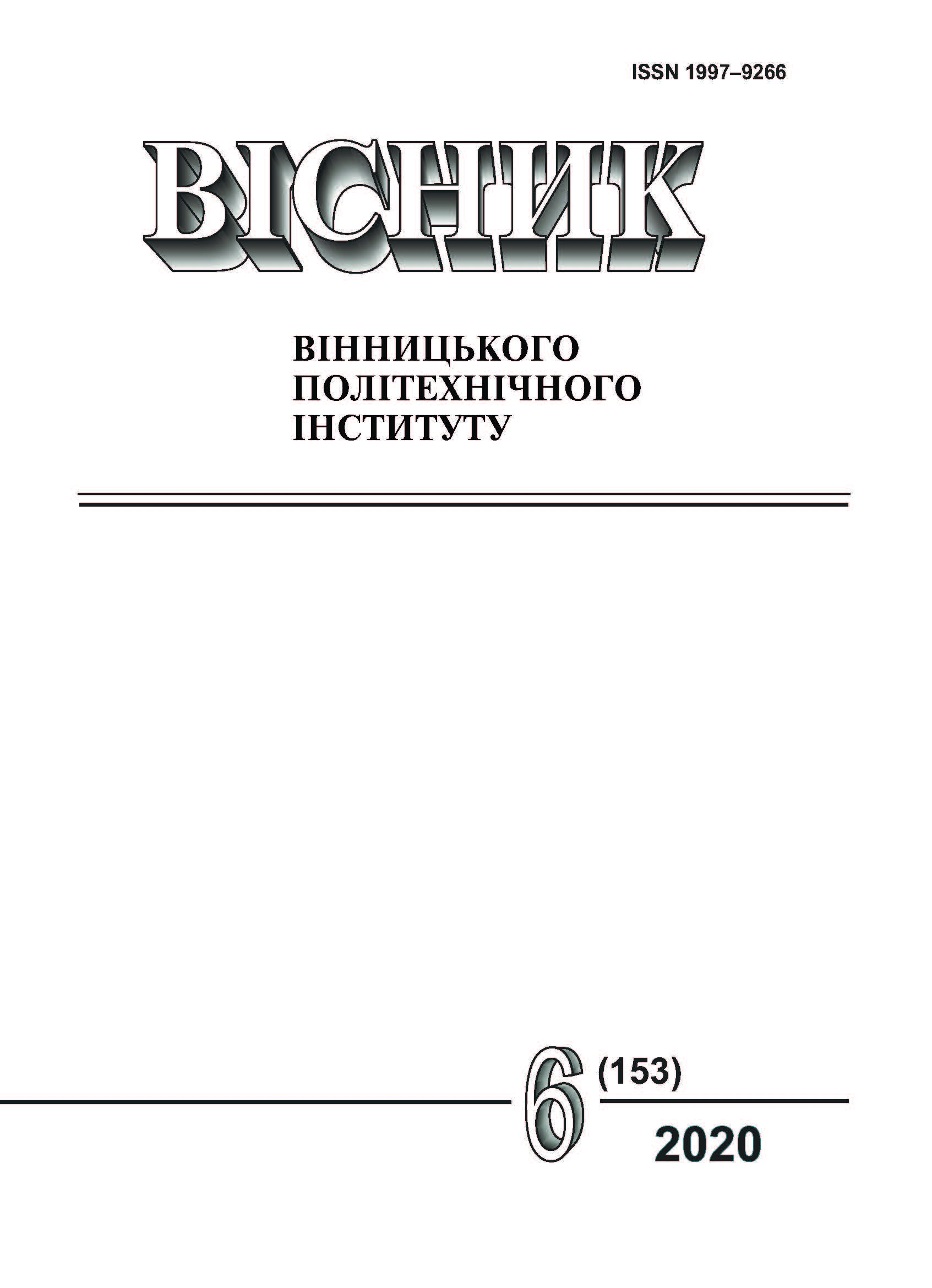Study the Formation of Vibration Signs in the Axial Direction on the Standard Running Wheels of the Overhead Crane Truck
DOI:
https://doi.org/10.31649/1997-9266-2020-153-6-100-106Keywords:
running wheel, vibration, cargo truck, overhead crane, cargoAbstract
The article discusses experimental studies of the formation of vibration accelerations in the axial direction on axles with driven and driven standard cylindrical double-flange travel wheels. The study of the formation of vibration signs was carried out during the movement of the cargo carriage of an overhead crane, both without load and with a load of various weights. Traveling wheels are the fastest wearing parts of an overhead crane. A decrease in the time of their operation leads to an increase in the monetary costs of repair work to restore the running wheels or replace them. Therefore, for modern crane construction, a very urgent task is to increase the service life of crane traveling wheels due to their modernization. The designs of crane traveling wheels are currently quite rigid and do not perceive distortions and shocks that arise when the rail track deviates from the recommended values. This leads to significant wear on the rails, as well as on the flanges of the crane traveling wheels.
To check the previously obtained theoretical data, an experimental study was carried out on an overhead crane with a lifting capacity of 5 tons, a span of 22.5 m, a lifting height of 8 m, an operating mode of 7 K. drive standard running wheels of the overhead crane trolley.
Also, the analysis of the regularity of the formation of vibration signs during the movement of the cargo trolley of an overhead crane at various speeds, as well as in its various operating modes, is carried out.
The level of vibration accelerations in the axial direction on the axles of the wheels with an increase in the weight of the load demonstrates multidirectional tendencies. For the drive wheel, the RMS vibration is reduced compared to a smaller load case (30% between 0.5 tones and 2.0 tones), and approaches the value of vibration levels at idle speed.
References
Є. Д. Слепужніков, і Н. М. Фідровська, «Використання кранів мостового типу в сучасній промисловості,» Tendenze attuali della moderna ricerca scientifica: der Sammlung wissenschaftlicher Arbeiten «ΛΌГOΣ» zu den Materialien der internationalen wissenschaftlich-praktischen Konferenz, Stuttgart, Deutschland, 2020, р. 96-97. https://doi.org/10.36074/05.06.2020.v3.40 .
Y. Qin, J. Jiang, and H. Yang, “High precision analysis of stress concentration in girder structure of casting crane,” International Journal of Science and Qualitative Analysis, vol. 2, no. 2, pp. 14-18, 2016. https://doi.org/10.11648/j.ijsqa.20160202.11 .
L. Kutsenko et. al.,“Modeling the resonance of a swinging spring based on the synthesis of a motion trajectory of its load,” Eastern-European Journal of Enterprise Technologies, vol. 3/7, no. 99, pp. 53-64, 2019. https://doi.org/10.15587/1729-4061.2019.168909.
L. Kutsenko et. al.,“Development of a method for computer simulation of a swinging spring load movement path,” Eastern-European Journal of Enterprise Technologies, vol. 1/7, no. 97. pp. 60-73, 2019. https://doi.org/10.15587/1729-4061.2019.154191 .
L. Kutsenko et. al.,“Synthesis and classification of periodic motion trajectories of the swinging spring load,” Eastern-European Journal of Enterprise Technologies, vol. 2/7, no. 98, pp. 2-37, 2019. https://doi.org/10.15587/1729-4061.2019.161769 .
W. Meng, Z. Yang, X. Qi, and J. Cai, “Reliability analysis-based numerical calculation of metal structure of bridge crane,” Mathematical Problems in Engineering, vol. 2013/1, no. 5, pp. 1-5, 2013. https://doi.org/10.1155/2013/260976 .
T. Haniszewski, “Strength analysis of overhead traveling crane with use of finite element method,” Transport problems, vol. 9, no. 1, pp. 19-26, 2014.
T. Haniszewski, “Modeling the dynamics of cargo lifting process by overhead crane for dynamic overload factor estimation,” Journal of vibroengineering, vol. 19, no. 1, pp. 75-86, 2017. https://doi.org/10.21595/ jve.2016.17310 .
J. C. Castro, E. H. Palafox, L. H. Gómez, G. S Mendoza., Y. L. Grijalba, and P. R. López, “Analysis of the structural girders of a crane for the license renewal of a BWR Nuclear Power Plant,” Procedia Structural Integrity, vol. 17, pp. 115-122, 2019. https://doi.org/10.1016/j.prostr. 2019.08.016 .
Д. Н. Артамонов, и А. М. Петров, «Модернизация механизма передвижения тележки мостового крана,» Молодой исследователь, № 5, с. 12-16, 2017.
M. С. Корытов, «Перемещение грузовой тележки мостового крана в режиме подавления неуправляемых колебаний груза,» Проблемы управления, № 2, с. 10-16, 2017.
A. Zeliс, N. Zuber, and R. Sostakov, “Experimental determination of lateral forces caused by bridge crane skewing during travelling,” Eksploatacja i Niezawodnosc, vol. 20, no. 1, pp. 90-99, 2018. https://doi.org/10.17531/ein.2018.1.12 .
V. F. Gankevich, L. V. Gryaznova, and A. G. Lisnyak, “Ways to enhance the reliability of wheel pairs of locomotive transport,” Naukovyi Visnyk NHU, № 5, pp. 76-79, 2012.
Т. Haniszewski, “Hybrid analysis of vibration of the overhead travelling crane,” Transport problems, vol. 9, no. 2, pp. 89-99, 2014.
Downloads
-
PDF (Українська)
Downloads: 122
Published
How to Cite
Issue
Section
License

This work is licensed under a Creative Commons Attribution 4.0 International License.
Authors who publish with this journal agree to the following terms:
- Authors retain copyright and grant the journal right of first publication.
- Authors are able to enter into separate, additional contractual arrangements for the non-exclusive distribution of the journal's published version of the work (e.g., post it to an institutional repository or publish it in a book), with an acknowledgment of its initial publication in this journal.
- Authors are permitted and encouraged to post their work online (e.g., in institutional repositories or on their website) prior to and during the submission process, as it can lead to productive exchanges, as well as earlier and greater citation of published work (See The Effect of Open Access).





